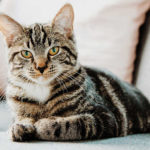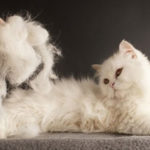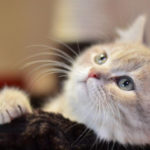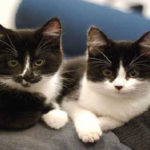The Turkish Van, also known as the Turkish Van cat, is a native and ancient breed of Turkey. Learn about their origins, how to care for them, and their price.
If you’re a cat lover, you can’t miss the beautiful Turkish Van cat. They are one of the most popular cat breeds today. Let’s explore this breed with Bach Hoa XANH!
1 All About the Turkish Van Cat
Origin of the Turkish Van Cat
Research suggests that the Turkish Van cat has been around for about 5,000 years. Archaeologists have found sculptures and carvings resembling the modern Turkish Van cat on jewelry, decorations, and drawings.
The Turkish Van is a native breed of Turkey. However, it was only recognized by the Cat Association in 1970. To distinguish it from the Turkish Angora cat of England, this breed was named after the region it inhabited, the Lake Van area of the Armenian Highlands in Turkey.
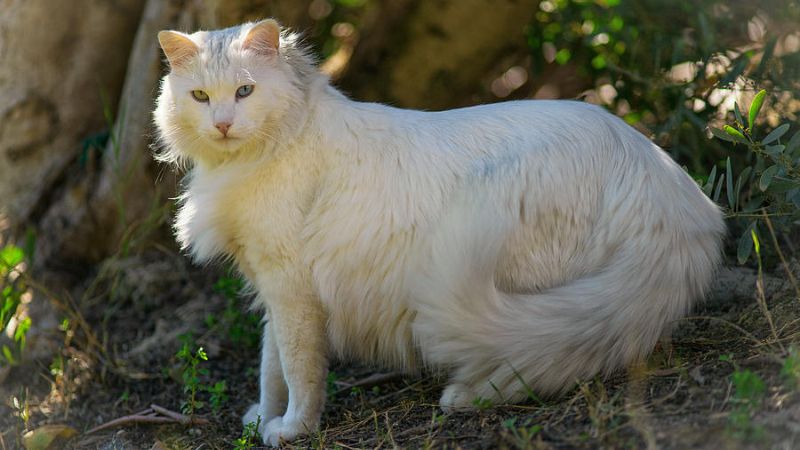 The Turkish Van Cat
The Turkish Van Cat
Physical Characteristics of the Turkish Van Cat
The Turkish Van cat is quite large compared to other cat breeds. Adult males weigh between 5 and 10 kg, while females weigh between 4 and 7 kg. It takes about 3-5 years for a Turkish Van kitten to reach full maturity.
The head of the Turkish Van cat is relatively round and proportionate to its body. They have large, triangular ears that stand erect on their head. Their long, slender legs enable them to move quickly and easily, even on uneven terrain.
The Turkish Van’s coat is naturally water-resistant due to its single-layered structure of short but thick and smooth fur. They are known for their colorful patterns. About 80% of their body is white, with the remaining 20% featuring colors like red, brown, blue, cream, or tortoiseshell. They are sometimes called “piebald” cats because of their distinctive coloring.
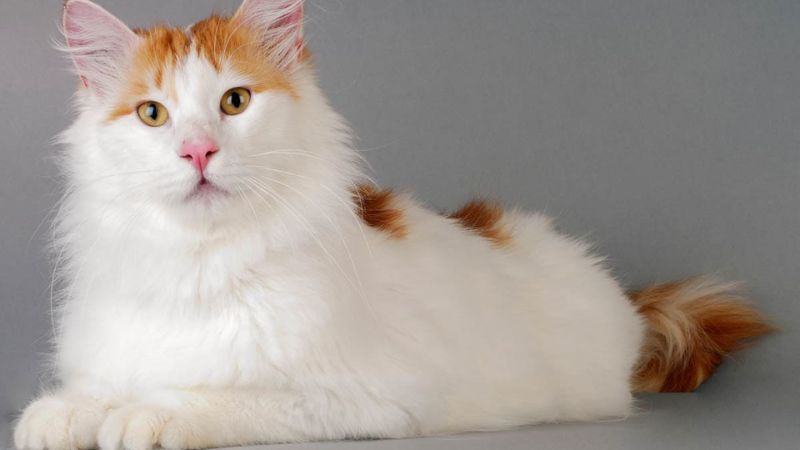 The Turkish Van Cat has a balanced and healthy physique.
The Turkish Van Cat has a balanced and healthy physique.
Personality Traits
The Turkish Van cat is known for its enthusiastic and energetic personality. They thrive on attention and affection from their owners, so if you decide to adopt one, be prepared to spend quality time with your furry friend.
Despite their energetic nature, Turkish Van cats can be cautious and wary of strangers. They may even use their claws if a stranger attempts to pet them.
Originating from the Lake Van region of Turkey, these cats enjoy playing with water, whether it’s in a sink or a puddle. They are excellent swimmers and are sometimes called “swimming cats.”
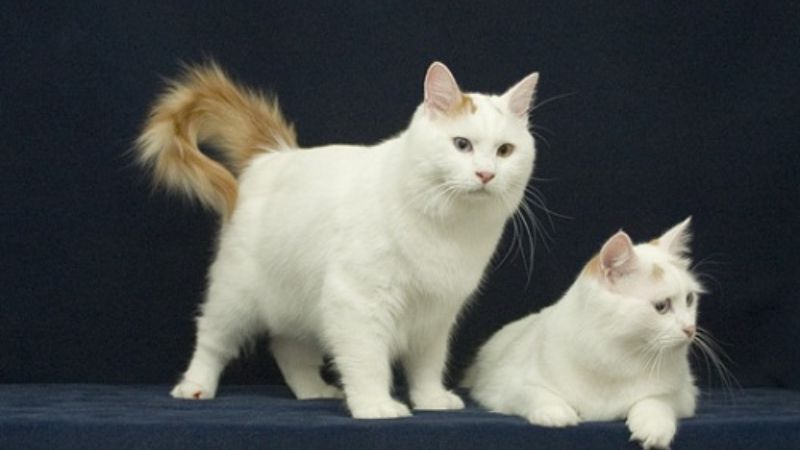 The Turkish Van Cat is enthusiastic and energetic.
The Turkish Van Cat is enthusiastic and energetic.
2 How to Care for a Turkish Van Cat
Feeding Your Turkish Van Cat
Provide a balanced diet that meets their nutritional needs. Turkish Van cats enjoy eating dry food formulated for cats, which can be purchased from pet stores.
You can also prepare homemade meals, but be sure to consider the cat’s individual health needs. Avoid giving hard food or fish bones to young kittens to prevent choking hazards.
Note: Avoid feeding your Turkish Van cat dairy products like cow’s milk, as these can cause digestive issues and other health problems.
Grooming and Hygiene for Turkish Van Cats
- Brush your Turkish Van cat’s coat once a day to remove loose hair.
- Bathe your cat every 2-3 weeks, despite their water-resistant fur, to maintain hygiene and prevent skin issues.
- Trim their nails weekly and maintain dental hygiene by brushing their teeth regularly with pet-safe toothpaste.
Common Health Issues in Turkish Van Cats
- Turkish Van cats generally have robust health, but they may be prone to dental and skin issues, such as fungal infections. Obesity is also a concern, so it’s important to provide a balanced diet and regular exercise.
Additional Care Tips for Turkish Van Cats
- Keep your cat’s vaccinations and deworming up to date, and schedule regular vet check-ups every 6-12 months. Only purchase cats from reputable breeders, ensuring they are over two months old and have received their initial vaccinations. If you don’t plan on breeding, consider spaying or neutering your cat around five months of age to improve their overall health and longevity.
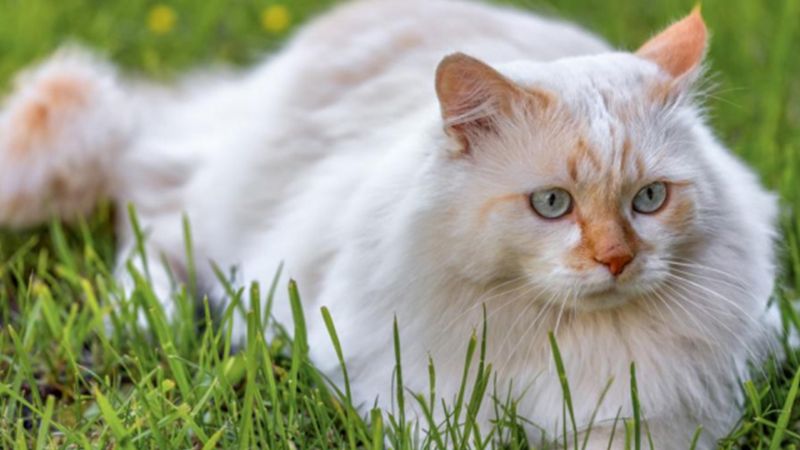 The long-haired beauty of a Turkish Van Cat.
The long-haired beauty of a Turkish Van Cat.
3 Buying a Turkish Van Cat
Pricing for Turkish Van Cats
- In the Vietnamese market, Turkish Van cats are still quite rare, so they may not be readily available in pet shops. You may need to place an order or search for specialized breeders.
- Due to their limited availability, Turkish Van cats can be expensive, ranging in price from 15 million to nearly 40 million VND, depending on their lineage, health, and coat color.
Tips for Buying a Turkish Van Cat
- Only purchase from reputable sources, and avoid online scams.
- Before buying, carefully examine the cat’s physical characteristics, health, and pricing.
 The Turkish Van Cat is a popular choice for pet owners.
The Turkish Van Cat is a popular choice for pet owners.
Now you know all about the Turkish Van cat! If you’re ready to bring one of these beautiful cats into your life, start your search today.
The Ultimate Guide to Muscular Cats: Origins, Characteristics, Care, and Pricing
For cat lovers, the Mop cat is a familiar breed, but many may not know much about these fascinating felines. Today, let’s delve into the origin, characteristics, care, and pricing of these unique cats and discover what makes them so special.
Is Cat Hair Loss Normal? Understanding and Treating Your Cat’s Hair Loss
“Pet owners often worry when they see their beloved feline friends shedding hair. It’s a common concern, and many wonder about the cause. So, today, we will shed some light on this very topic and explain why cats shed their fur! Stay tuned as we unravel the mystery behind your cat’s shedding habits.”
The Scottish Fold: A Comprehensive Guide to its Origins, Characteristics, Care and Pricing
The Scottish Fold, or simply the ‘Fold’, is an adorable breed of cat with a unique biological trait; its ears fold forward and downward, giving it a distinctive and charming appearance. This breed originated in Scotland and has since captured the hearts of cat lovers worldwide. With their sweet faces and affectionate nature, it’s no wonder that people are eager to learn more about their history, care, and availability. This introduction aims to provide a glimpse into the world of the Scottish Fold, offering insight into their origins, the specific care they require, and the process of welcoming one of these captivating cats into your home.

